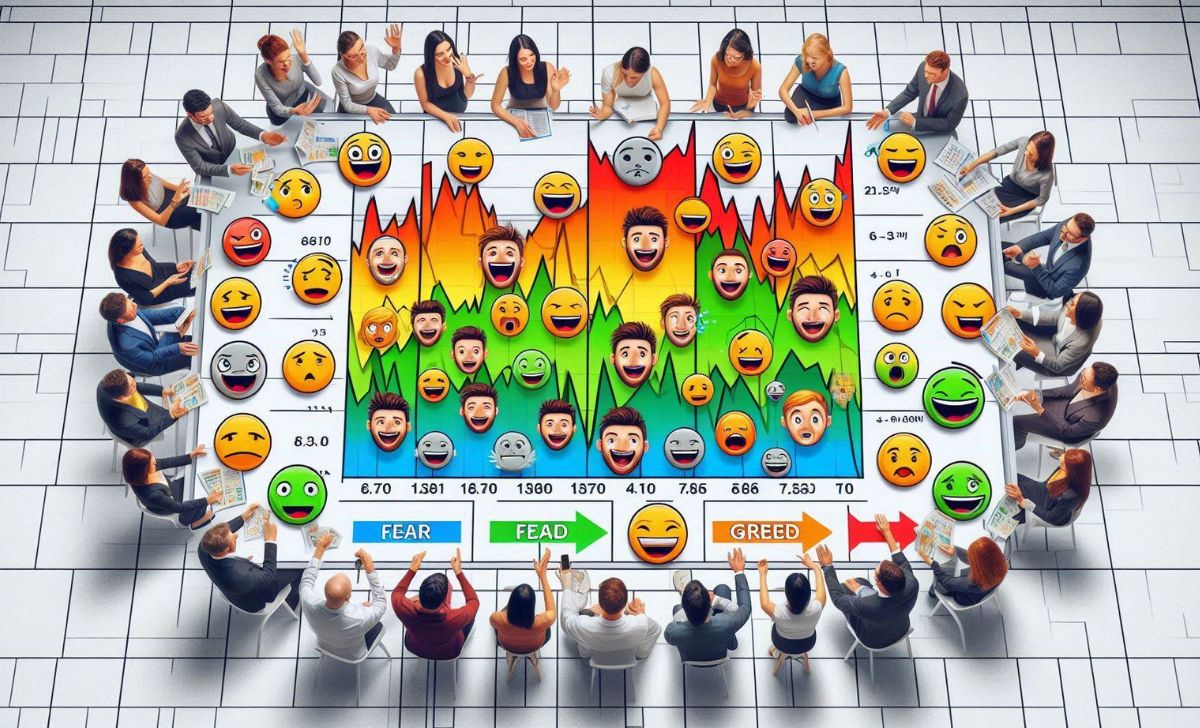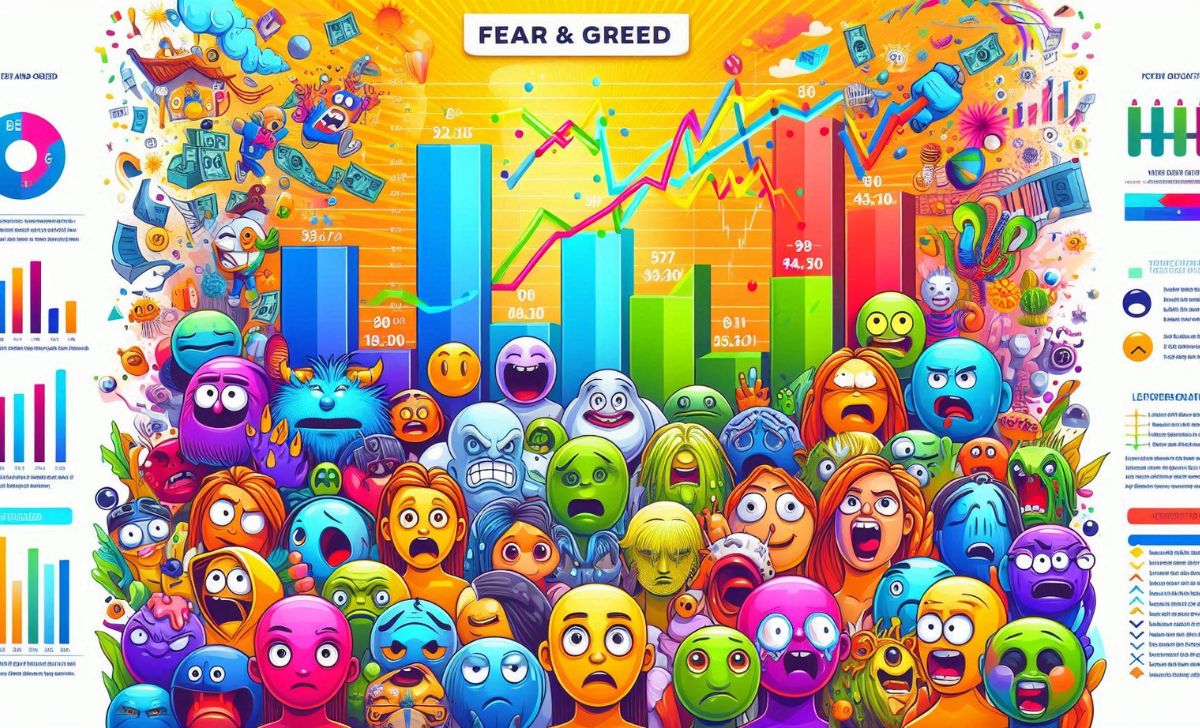Fear and Greed Index helps traders and investors decode the psychological forces driving market movements. It can highlight moments of excessive pessimism or overconfidence—both ideal conditions for entering or exiting trades.
Understanding how to use this tool can significantly enhance your timing and risk management strategy. In this article, we’ll explore the fear and greed index meaning, how it works, and how you can use it effectively.
What is the Fear and Greed Index?

The Fear and Greed Index is a market sentiment indicator that measures the emotions of investors—specifically fear and greed—to assess the overall mood in the financial markets. Developed by CNN Business and based on seven key factors—such as stock price momentum, market volatility, and safe haven demand—the Fear and Greed Index is scored on a scale from 0 to 100. XM traders can use this index alongside technical and fundamental tools to gauge market psychology and time their entries or exits more effectively.
- A low score (0–49) indicates that fear—often extreme—is dominating the market, often linked with falling prices and risk aversion.
- A high score (51–100) suggests greed is driving investor behavior, which can lead to overbought conditions and potential market bubbles.
- A score of 50 is considered neutral, showing a balanced sentiment.
This tool helps traders and investors understand whether the market is being driven by panic or overconfidence. When the index shows extreme fear, it may signal a buying opportunity, while extreme greed could indicate that the market is overbought and due for a correction.
In essence, the meaning of the Fear and Greed Index lies in its ability to help traders and investors recognize when emotions—not fundamentals—are influencing the market. This insight is often used to spot contrarian trading opportunities, such as buying when others are fearful and selling when others are overly greedy. By combining this sentiment signal with well-defined risk reward ratios, traders can make more disciplined decisions and ensure that potential returns justify the risks taken during emotionally charged market conditions.
Key Components of the Fear and Greed Index

The Fear and Greed Index is composed of seven key components that together provide a comprehensive picture of market sentiment, icludes:
- Stock Price Momentum: This measures how the S&P 500 is performing relative to its 125-day moving average. Strong momentum usually signals greed, while weak momentum indicates fear.
- Stock Price Strength: This looks at the number of stocks hitting 52-week highs versus those hitting 52-week lows. A higher number of new highs signals greed dominating the market.
- Stock Price Breadth: This component assesses the volume of shares traded in advancing stocks compared to declining stocks, revealing overall market participation.
- Put and Call Options: This measures the ratio of bearish (put) options to bullish (call) options. A higher volume of puts reflects fear, while more calls suggest greed.
- Market Volatility: Measured by the CBOE Volatility Index (VIX), increased volatility is a sign of fear, while lower volatility indicates a greedy market environment.
- Safe Haven Demand: This compares the performance of stocks versus Treasury bonds. When investors flock to bonds, it reflects fear; when stocks outperform, greed is more likely.
- Junk Bond Demand: The difference in yields between junk bonds and safer investment-grade bonds indicates risk appetite. Narrow spreads suggest greed, while wider spreads imply fear.
By analyzing these factors, the fear and greed index becomes a powerful tool to identify potential turning points in market sentiment.
Why Does the Fear and Greed Index Matter in Trading?

The Fear and Greed Index matters in trading because it offers valuable insight into the emotional state driving the market—often influencing price movements more than fundamentals. For those who want to learn trading effectively, understanding the meaning of the Fear and Greed Index is essential, as it helps gauge whether the market is dominated by panic or excessive optimism, leading to better-informed decisions.
When fear prevails, investors typically sell off assets, causing prices to drop below intrinsic value. Conversely, during periods of greed, buying frenzies can inflate prices, leading to overbought conditions or bubbles. By recognizing these emotional extremes, traders who learn trading with a psychological edge can identify potential opportunities to buy low and sell high, aligning with contrarian strategies.
Integrating the Fear and Greed Index into a solid trading plan can help avoid common pitfalls—like chasing rallies or panicking in downturns—thereby improving decision-making and increasing success in volatile markets.
How to Use the Fear and Greed Index in Your Strategy

The Fear and Greed Index is a valuable tool that helps traders understand the emotional state of the market. By grasping the fear and greed index meaning, traders can better anticipate potential market turning points and improve their decision-making process.
Monitor the Fear and Greed Index Regularly
It is important to regularly monitor the Fear and Greed Index, especially through platforms like Fear and Greed Index TradingView that provide real-time updates. Keeping track of the index allows you to spot when market sentiment shifts from fear to greed or vice versa, which often signals possible reversals or trend changes.
Combine the Index with Technical and Fundamental Analysis
The Fear and Greed Index should not be used on its own. Instead, combine it with your existing technical analysis tools and fundamental research. For example, if the index shows extreme fear but your technical indicators suggest strong support levels, this could be a good buying opportunity. Conversely, if the index indicates extreme greed while other signals point to resistance, it may be time to consider taking profits or tightening stop-losses. Popular platforms like MT4 allow traders to integrate custom indicators and perform technical analysis efficiently, making it easier to align sentiment readings with chart-based setups.
Use the Index as a Contrarian Trading Indicator
Many successful traders use the Fear and Greed Index as a contrarian indicator. This means they look to buy when the index shows extreme fear—when most investors are pessimistic and prices may be undervalued—and sell when the index signals extreme greed, which often precedes market corrections or bubbles.
Improve Risk Management with the Fear and Greed Index
Use the Fear and Greed Index to manage your risk more effectively. During times of extreme greed, markets tend to be more volatile and prone to sharp corrections, so you might want to reduce position sizes or set tighter stop-loss orders. On the other hand, in fearful markets, cautious accumulation or gradual position building can pay off when sentiment improves.
FAQs About the Fear and Greed Index

To help you better understand the Fear and Greed Index and how it can impact your trading decisions, here are some of the most frequently asked questions. These answers cover the basics and provide practical insights into using this powerful market sentiment tool effectively.
What is the Fear and Greed Index?
It is a market sentiment indicator developed by CNN Business that measures investor emotions from 0 (extreme fear) to 100 (extreme greed).
How does the Fear and Greed Index affect trading decisions?
It helps traders spot buying opportunities during extreme fear and selling points during extreme greed by showing market emotion.
Where can I find the Fear and Greed Index?
You can find it on platforms like Fear and Greed Index TradingView and CNN Business websites.
Can the Fear and Greed Index predict market crashes?
It signals extreme emotions that may precede corrections but isn’t a precise predictor, timing the market precisely requires additional analysis.
How often is the Fear and Greed Index updated?
Most platforms update the Fear and Greed Index daily, reflecting the latest market data. Real-time platforms like TradingView may provide even more frequent updates.
Understanding market sentiment is crucial for investors and traders aiming to make informed decisions. The Fear and Greed Index is a simple yet powerful tool for measuring that sentiment. By truly understanding the Fear and Greed Index meaning, traders can navigate the emotional waves of the market more confidently—and potentially more profitably. Disclaimer: While useful, the index should be used alongside other tools and not as the sole basis for trading decisions.

Darius Elvon is a financial content strategist and editor with a strong focus on clarity and accuracy. He crafts easy-to-follow XM articles, covering promotions, trading tools, and platform updates to enhance user engagement. Email: [email protected]

 Tiếng Việt
Tiếng Việt